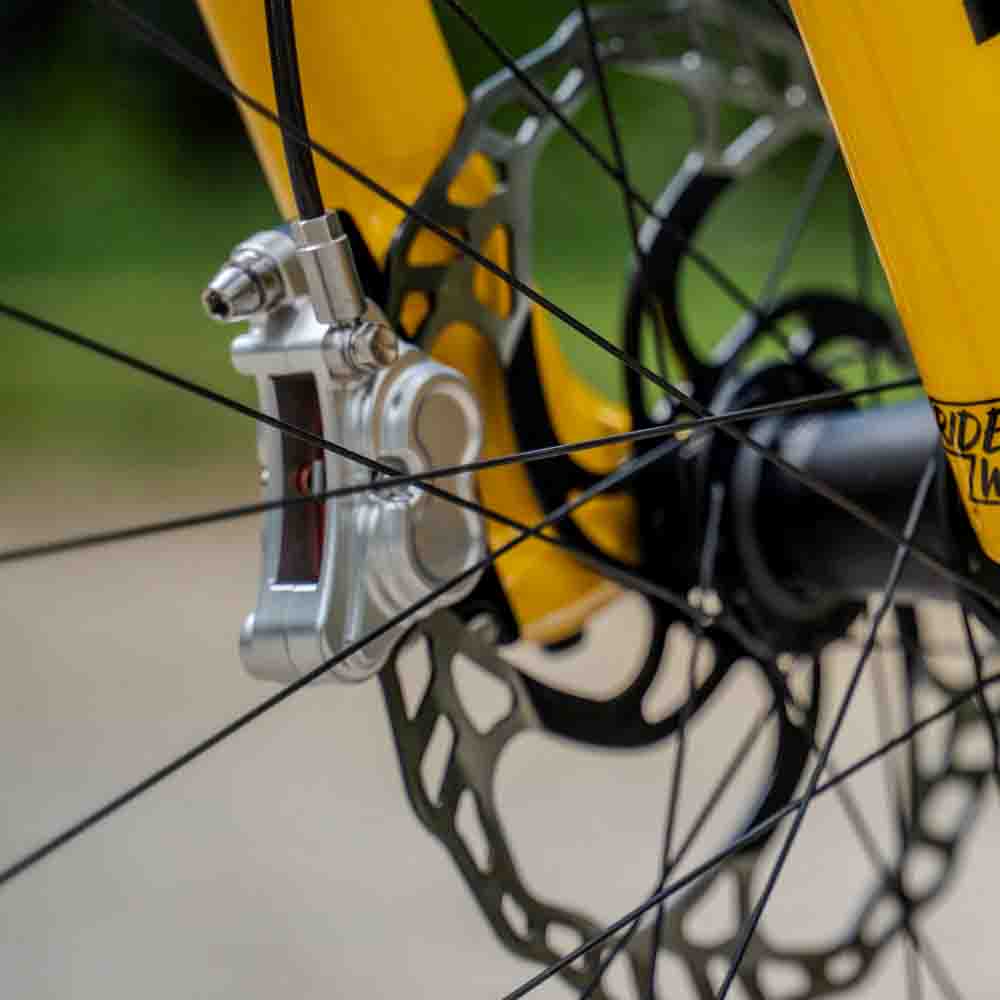
When Should I Replace My Shimano Brake Pads or Rotors? (Signs of Wear)
Share
Brakes are your bike’s most critical safety component—especially if you ride hard, fast, or frequently. Whether you’re using Shimano 2-piston or 4-piston calipers, knowing when to carry out a bicycle brake pad replacement and rotors is essential to staying safe and maintaining peak performance. In this guide, we’ll cover the key signs of wear and when it’s time to upgrade.
🚨 Signs Your Shimano Brake Pads Need Replacing
1. Pad Thickness
Shimano recommends replacing brake pads when the braking material wears down to 0.5mm or less. That’s about the thickness of a credit card. Most pads also have a wear indicator slot—if it’s no longer visible, it’s time to replace.
2. Reduced Braking Power
If your brakes feel weaker, take longer to bite, or fade under heat, it’s likely your pads are glazed, worn, or contaminated. Don’t ignore loss of performance—it’s often the first warning sign.
3. Metallic or Squealing Noises
Loud squeals, grinding, or scraping sounds may indicate metal-on-metal contact—meaning your pads are completely worn and damaging your rotors. Replace immediately to avoid further damage.
4. Contamination
Brake fluid, chain lube, or muddy grit can ruin pad surfaces. If your pads are visibly dirty or oily and you notice a sharp drop in stopping power, replacement is usually the only fix.
🔁 When Should You Replace Shimano Rotors?
1. Minimum Rotor Thickness
Most Shimano rotors have a stamped minimum thickness of 1.5mm. Use a digital caliper to measure. Below this threshold, the rotor loses strength and heat resistance, risking warping or failure.
2. Deep Grooves or Scoring
Minor surface marks are normal, but deep scoring from worn pads reduces braking effectiveness and increases pad wear. If grooves are clearly visible or felt, replace the rotor.
3. Warping or Vibration
If you feel pulsing at the lever or hear rubbing, your rotor may be heat-warped. While minor bends can be trued, significant warping is unsafe and calls for a replacement.
4. Discoloration or Cracking
Blue or black heat marks indicate rotor overheating, which weakens braking power. Cracks—however small—are a serious danger. If you spot one, stop riding immediately and replace the rotor.
🔍 How Often Should You Check Brake Wear?
We recommend inspecting your brake pads and rotors every 3–6 weeks, or more often if you ride in wet, steep, or muddy terrain. Aggressive riders and heavier bikes tend to wear through components faster.
🦍 Upgrade to Gorilla Brakes for Shimano
Time for fresh pads? Gorilla Brakes offers high-performance, Shimano-compatible brake pads designed for control, silence, and durability in all riding conditions.
- ✅ Low-noise, all-weather organic compounds
- ✅ Compatible with Shimano 2- and 4-piston calipers
- ✅ Excellent heat dissipation for fade-free braking
- ✅ Eco-friendly packaging and recyclable materials
👉 Shop Gorilla Brakes Shimano Pads Now
💬 Final Thoughts
Don’t wait until you lose braking power on a descent. Replacing worn brake pads or rotors before they fail ensures you stay safe and protect your investment in your bike.
Need help choosing the right brake pads for your Shimano system? Please feel free to give us a call.